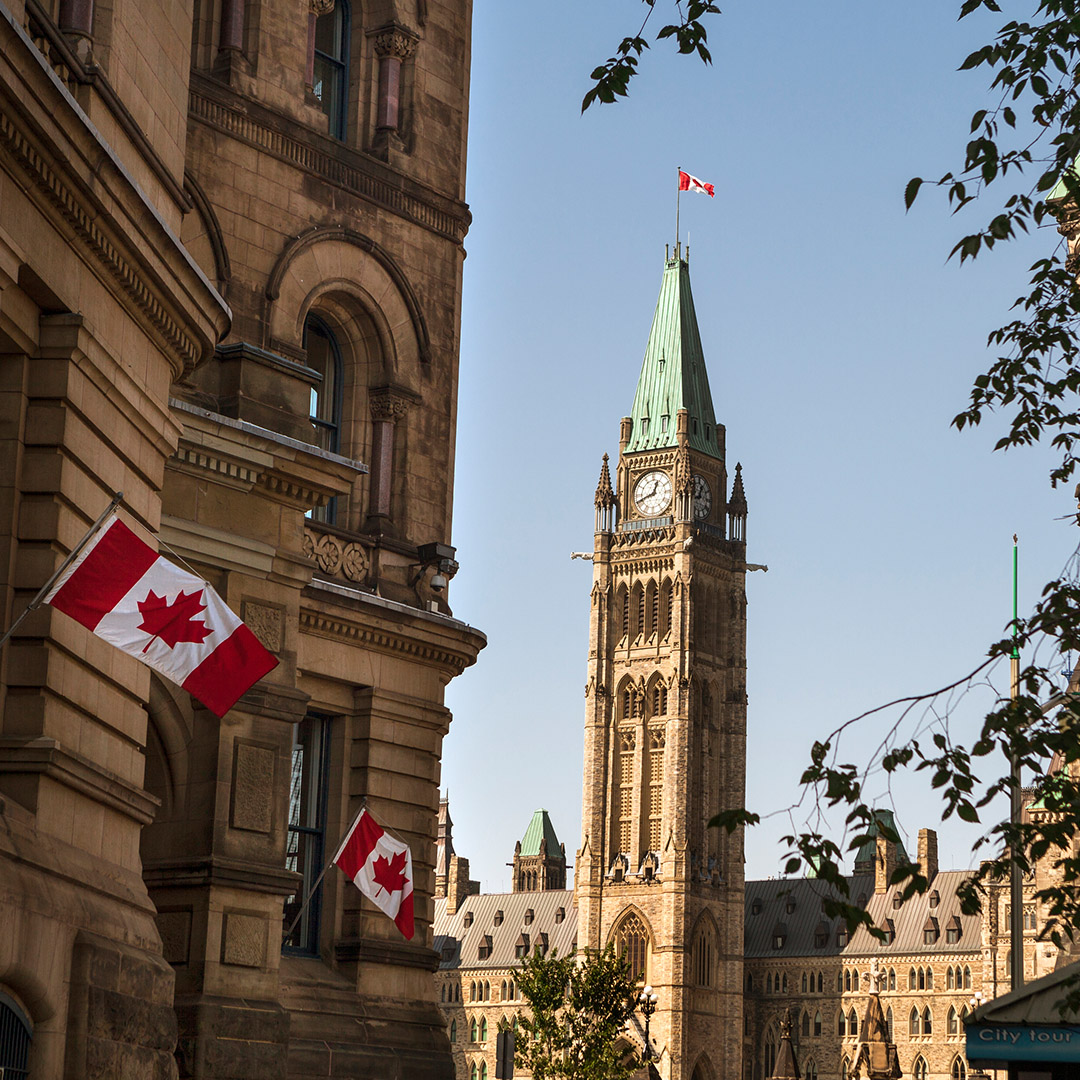Canada-U.S. Relations
Strengthening Canada’s Economic Future
Key Impacts on Canada’s Economic Future
Canada and the United States have one of the largest and most comprehensive trading relationships in the world – nearly $3.6 billion worth of goods and services cross the border every day, supporting millions of jobs on both sides of the border. As Americans head to the polls in November, it is critical to understand the impact that either a Democratic or Republican Administration would have on Canada’s economic security and prosperity.
In this three-part series, we break down this bilateral relationship in depth to understand how the U.S. election could impact the jobs, livelihoods and future prosperity for Calgarians, Albertans and Canadians. Explore each part below.
The latest update on tariffs
This is not business as usual. We are here to help you break down the possible impacts of the tariffs on the economy and your business.

2024 U.S. Election: Impact on the Calgary Business Community
Analyzing the value of the Canada-U.S. trade relationship and providing insights of both Trump and Harris’ potential direction on foreign trade.

2024 U.S. Election: Republican & Democrat Economic Policy
Diving into specific platforms for each major party in the U.S. and providing an analysis of their impacts on the Canadian economy.

2024 U.S. Election: Recommendations to Canadian Governments
Providing actionable recommendations for Canadian governments to work effectively with either successful candidate in the U.S. election.
UPDATE:
Standing strong for businesses amid uncertainty
At a time when the world as we know it is shifting under our feet, we want you to know that your Chamber is here for you.
We are fiercely advocating to all orders of government to ensure businesses – the cornerstone of our economy – are protected, and, perhaps uncover opportunities. We’re at the table on your behalf, as part of the Mayor’s Working Group on Tariffs, the provincial government’s Trade Advisory Council, and through the federal Forum for U.S.-Canada Issues.
Our advocacy relies on input from our members. We are always eager to hear from you – whether to share your experience, provide input on our recommendations to government, or to let us know how we can serve you during this time of uncertainty and rising costs.
What you can expect
This is a time to expect the unexpected. Calgary is no stranger to uncertainty, but here’s what you can expect:
Effect on Consumer Spending
With rising prices, consumer spending may decrease. We’re particularly concerned about the impact to sectors that fall in the category of discretionary expenses, which are usually the first hit by economic challenges.
Switching to Local Goods
Local and non-American goods will be relatively cheaper. Looking for opportunities to switch to local options will help businesses and consumers mitigate rising costs.
Contract Renegotiations
Contracts may be renegotiated or adjusted. Suppliers may amend contracts using emergency provisions, meaning the prices of various goods already agreed upon may increase, particularly for items ordered with a long lead time such as construction inputs. Some may not be honoured at all.
Inflationary Impact
Ultimately, by increasing prices, tariffs are inflationary, the Bank of Canada is currently projecting inflation to be 0.7% higher under tariffs. In light of this, the Bank of Canada is anticipated to announce more aggressive rate cuts, possibly to 2 or 2.5% mid-year, should tariffs persist.
Investor Hesitancy
Investors on both sides of the border are hesitant to invest capital because they do not have the certainty required to make investments. Access to capital will likely be a bigger issue in the short term but could be moderated by further interest rate cuts. Overall, there will be a significant amount of volatility in the markets, as both debt and equity markets adjust to all the uncertainty.
Long-term Economic Impact
Longer term, it’s anticipated this will impact Canadian GDP growth (0.5% projected with tariffs vs. 2.5% projected without), and employment lower by 36,000 in 2025 and 60,000 in 2026. Alberta could see unemployment numbers persist at the 7% range.
Oil Price Pressure
Oil prices have been under pressure, with WTI dropping from the average of $76.55 US per barrel in 2024, falling to $66.31/bbl on Wednesday. This is the lowest price for WTI since 2021, when it averaged $68.13/bbl and largely the result of the OPEC+ decision to increase oil production, announced earlier this week. There are no substitutes for Canada’s oil production, as it feeds the US refining complex. Additionally, energy use is inelastic, which means consumers will pay the higher prices at the pump due to the tariffs, muting the immediate impact to the sector. Further, the low Canadian dollar softens the impact of lower prices, when resources are sold in USD and converted to CAD.
Our recommendations
We’re working closely with all levels of government to develop immediate and longer-term plans, working to mitigate risk in the immediate term and make good use of a crisis in the long term.
As an immediate response, we recommend governments:
Advocate for the removal of tariffs levied against Canadian products by the U.S.
Canadian governments should continue their advocacy to demonstrate the value of the Canada-U.S. relationship, working to have the United States remove tariffs imposed on Canadian industries.
Mitigate impacts
Develop immediate and short-term financial supports for businesses and workers to insulate Canadians from financial harm, with particular consideration to discretionary consumer sectors that are more likely to be impacted by tariffs, lower consumer confidence and higher prices.
Support access to capital
Develop a loan program for businesses with significant exports to the U.S. to help provide capital required to expand into new markets.
Share resources
Provide businesses with resources to help them find alternative non-American inputs and understand likely economic impact on their business.
Work collaboratively
Collectively work with business leaders, particularly with companies who operate on both sides of the border, to bolster advocacy south of the border.
Reduce red tape
Make it easier for businesses to operate by reducing unnecessary and duplicative regulation and streamlining process to support businesses.
Address domestic policy & improve competitiveness
Prioritize the Canadian economy; removing problematic regulations, including the emissions cap, Bill C-59 and others.
Attract talent and tourism
Market Calgary and Canadian destinations within Canada and other foreign non-U.S. markets to offset decreased American tourism and leverage the low Canadian dollar, and cross-country desire to support our domestic economy.
Longer term, we encourage governments to:
Advance internal trade
Expeditiously and deliberately work to eliminate interprovincial barriers and advance mutual recognition of regulation to accelerate the changes.
Update procurement
Use government procurement to increase purchase of local Canadian goods, supporting local and exercising fiscal responsibility.
Bolster cross-border infrastructure
Invest in cross-border and trade infrastructure to increase capacity in our supply chains, increasing Canada’s reliability as a trading partner and promoting confidence for businesses as they change suppliers.
Expand markets
Open new markets and opportunities for businesses to expand in diversified and emerging markets, helping offset expansion opportunities no longer viable in the U.S.
Remove trade irritants
Particularly in light of potential CUSMA renegotiations and efforts to expand into new markets, address trade irritants and shore up strategic leverage ahead of negotiations.
If it matters to you, it matters to us.
We are your champion at the table with government – let us know what’s impacting you and your business.
